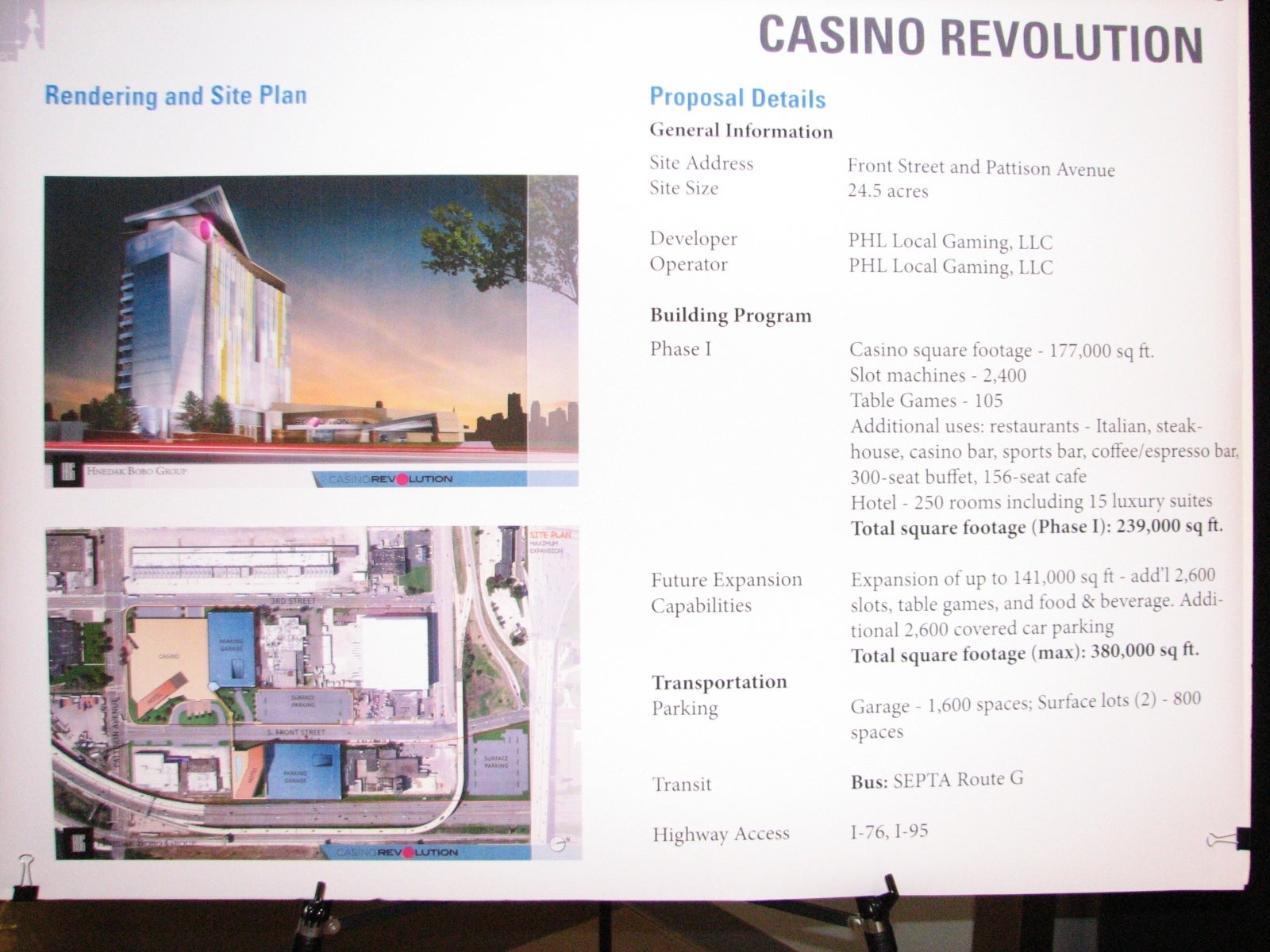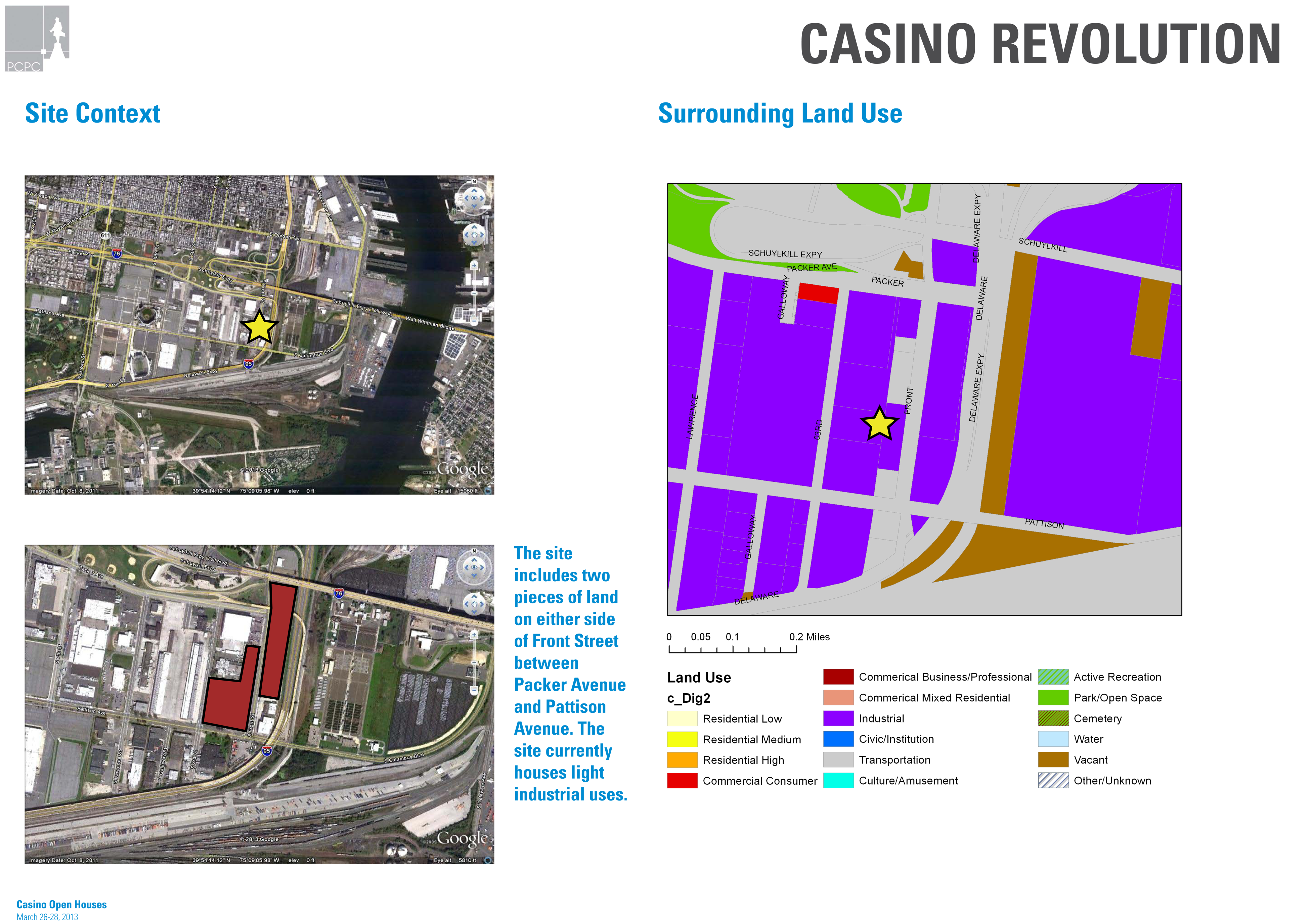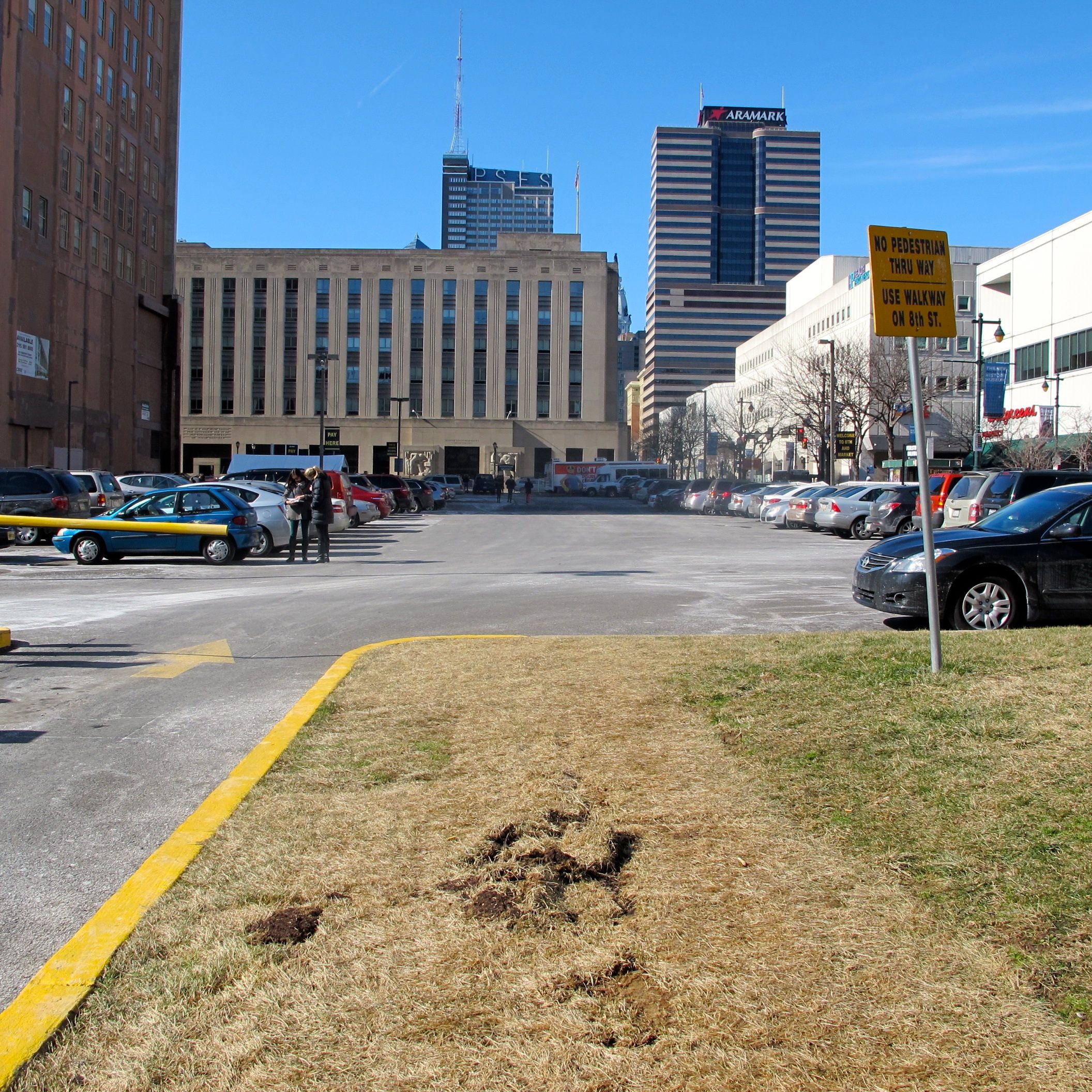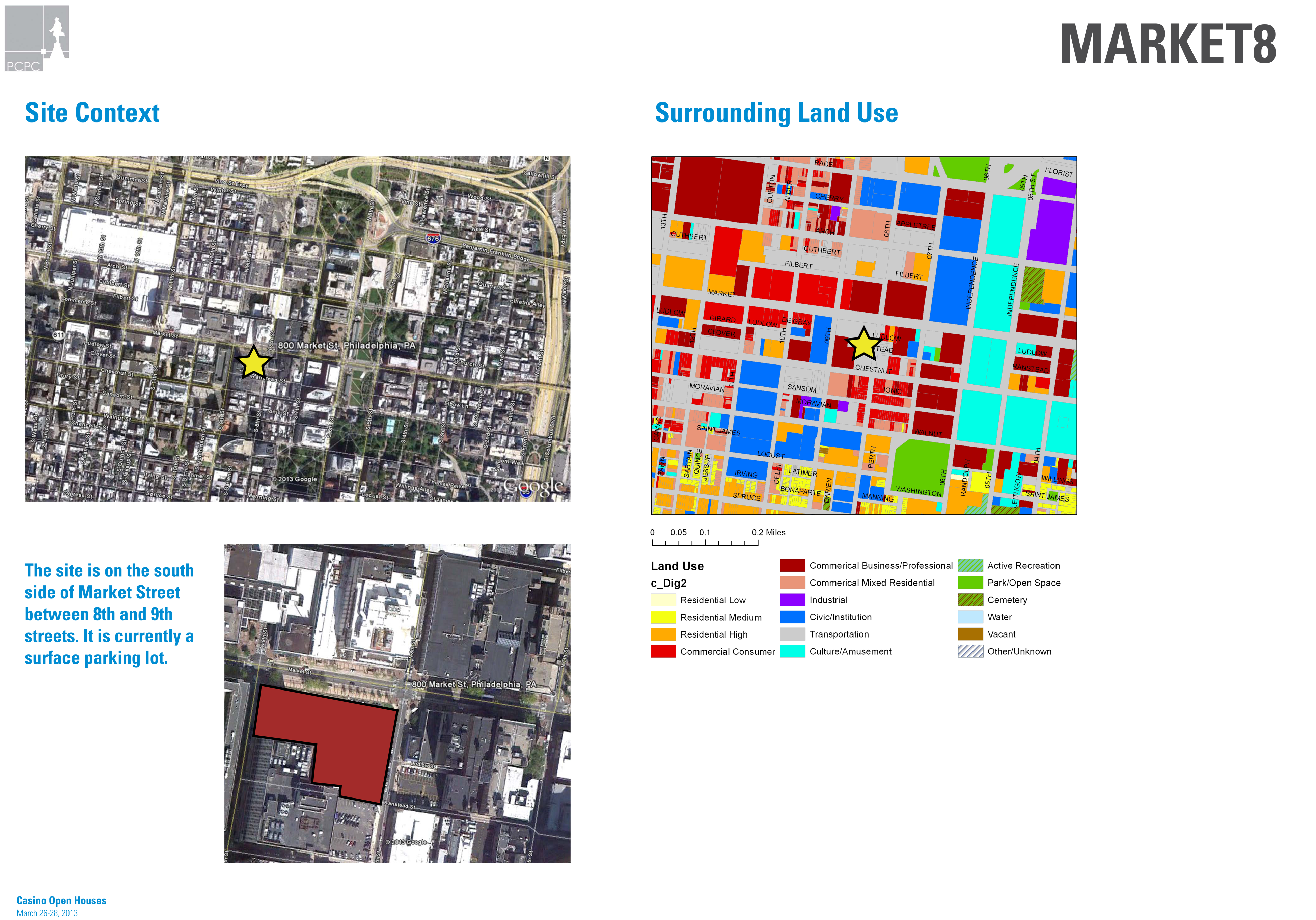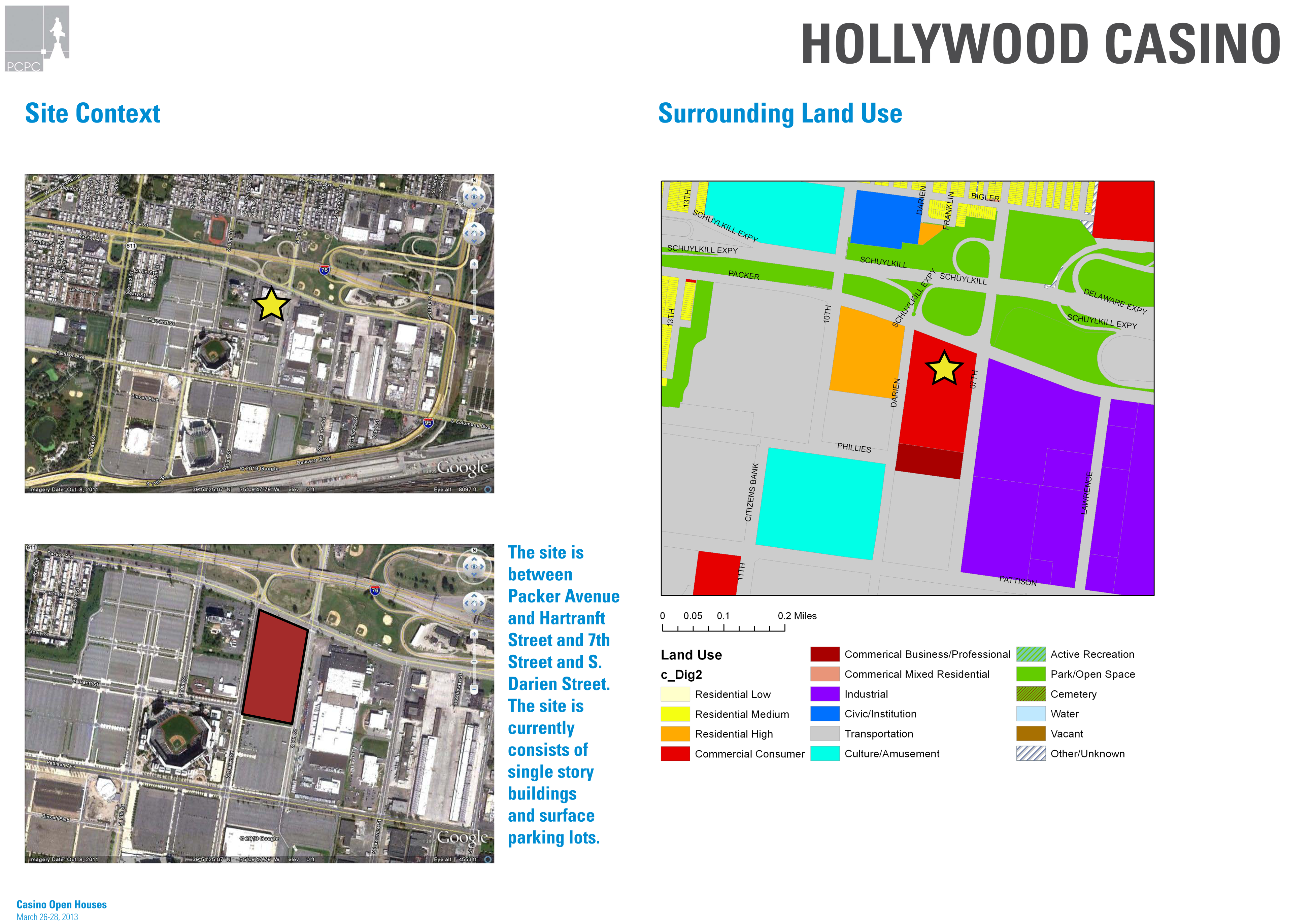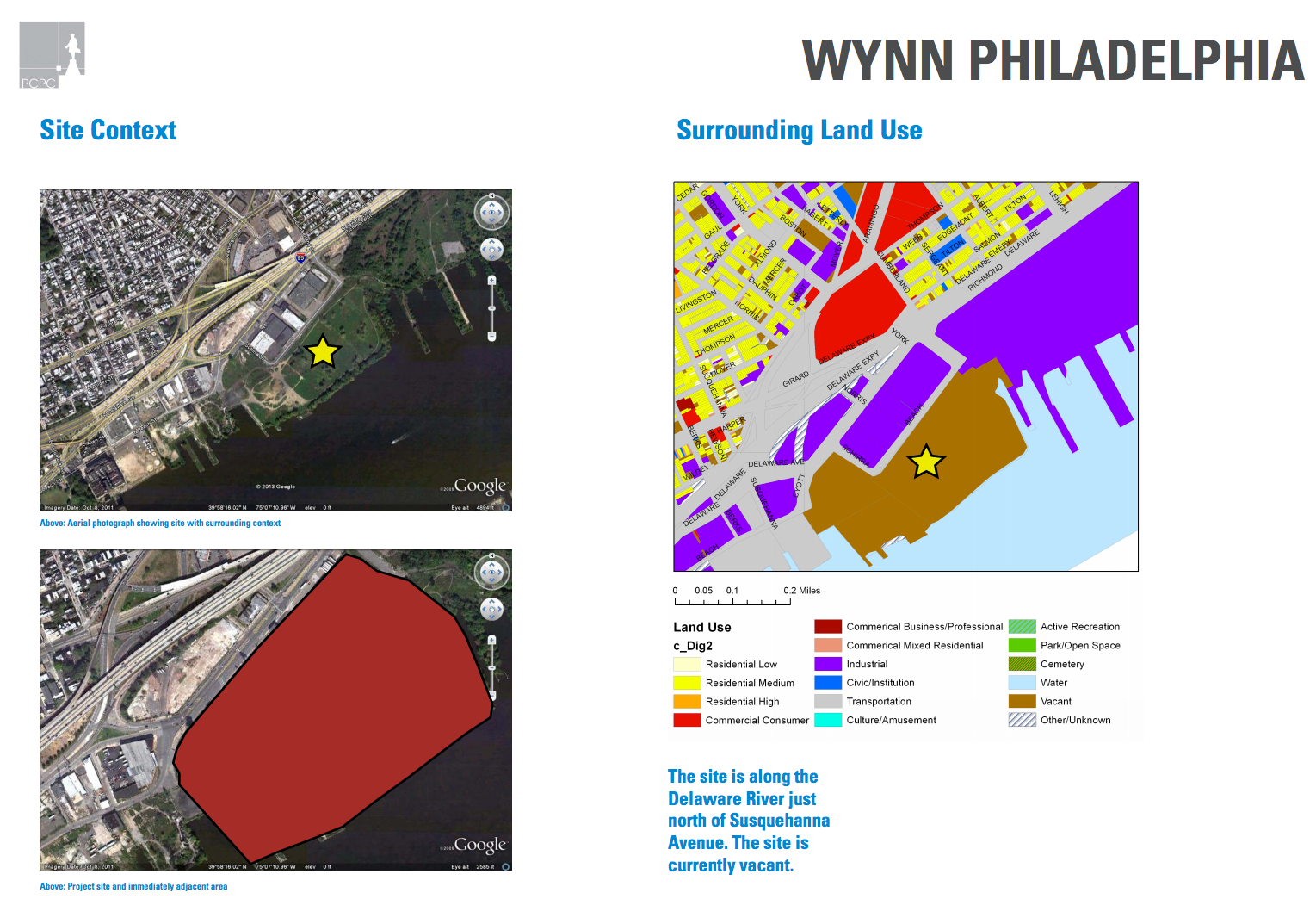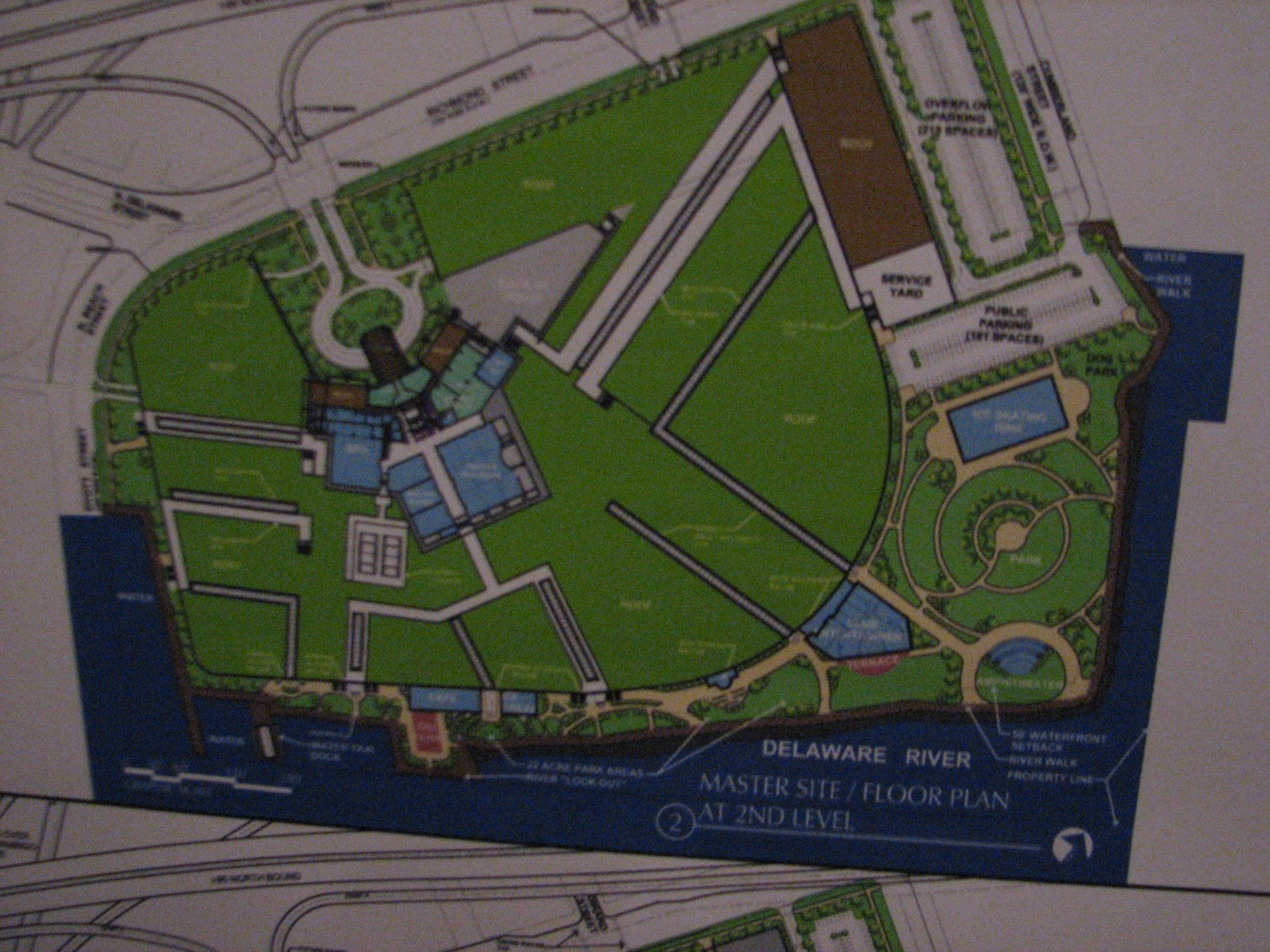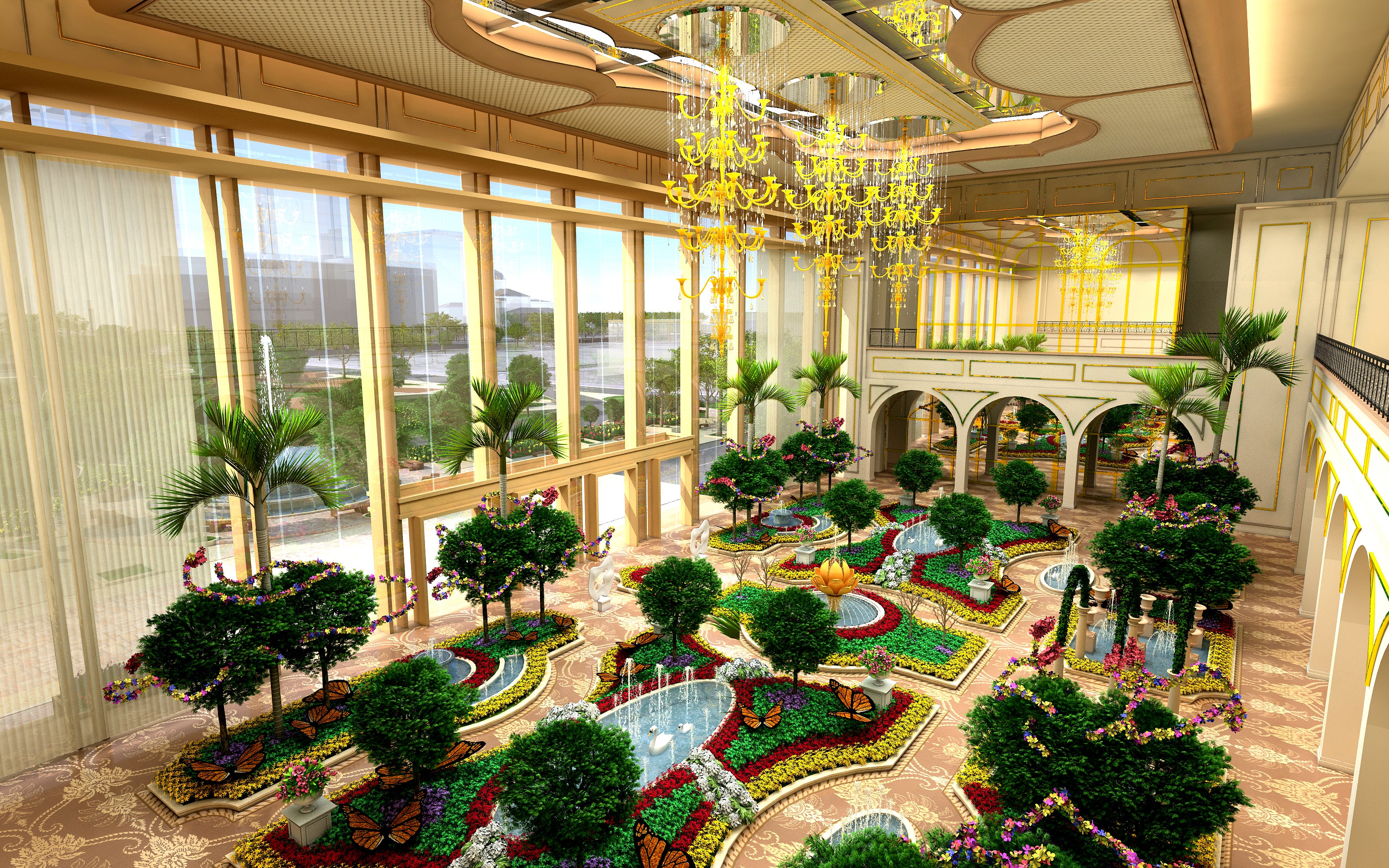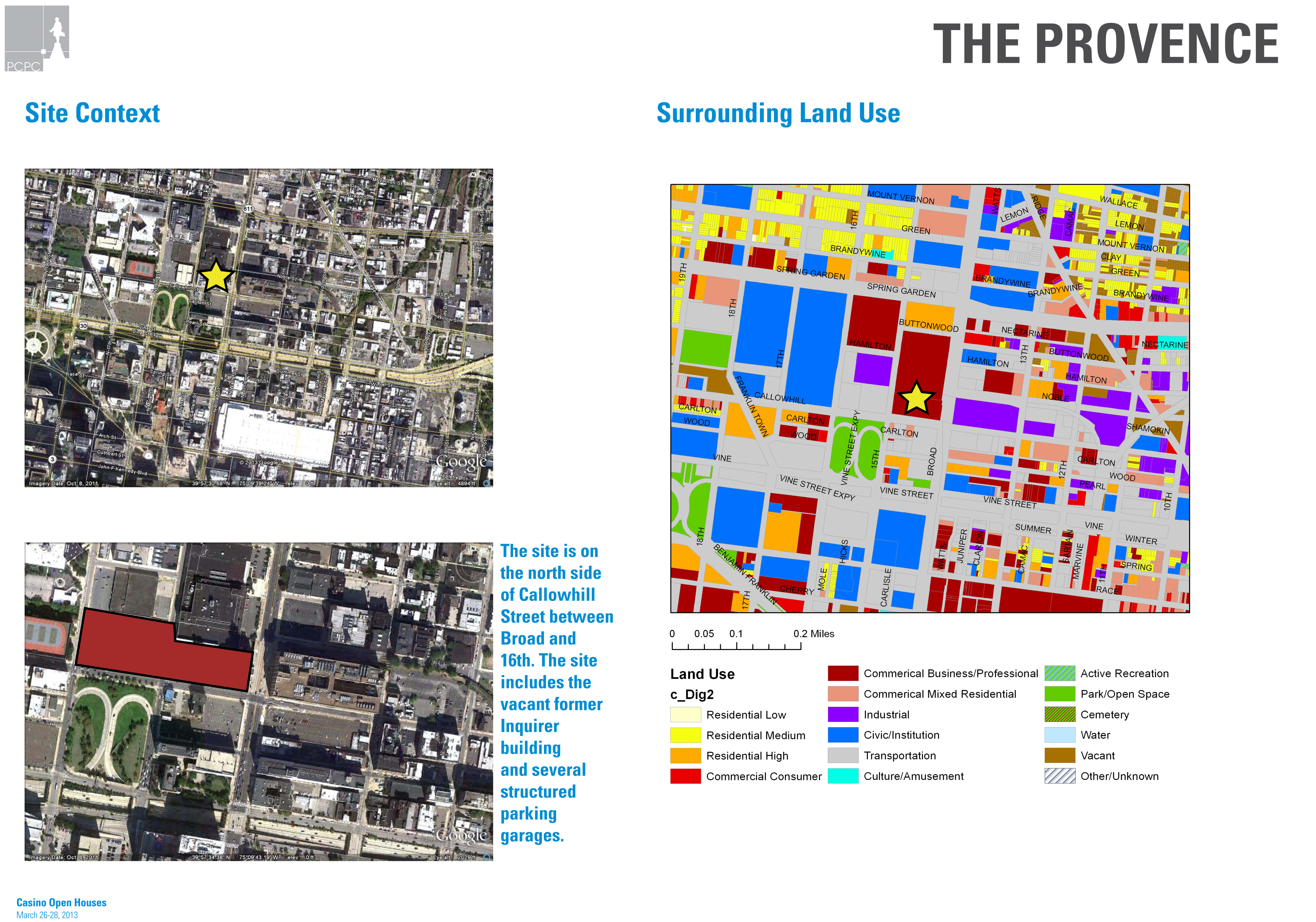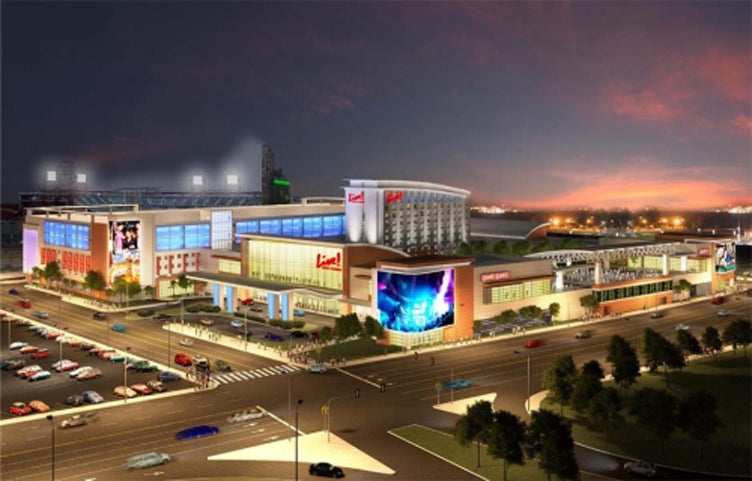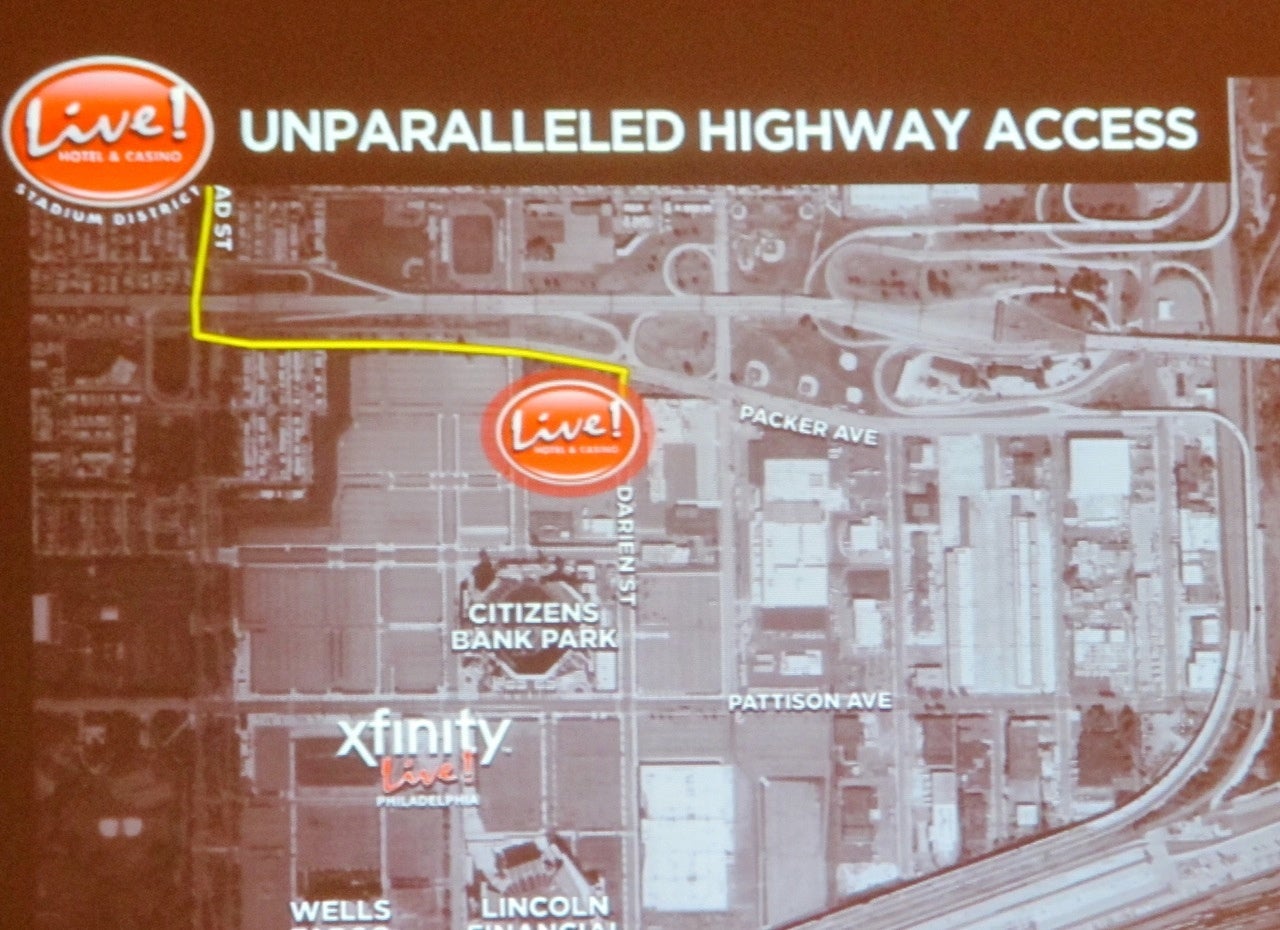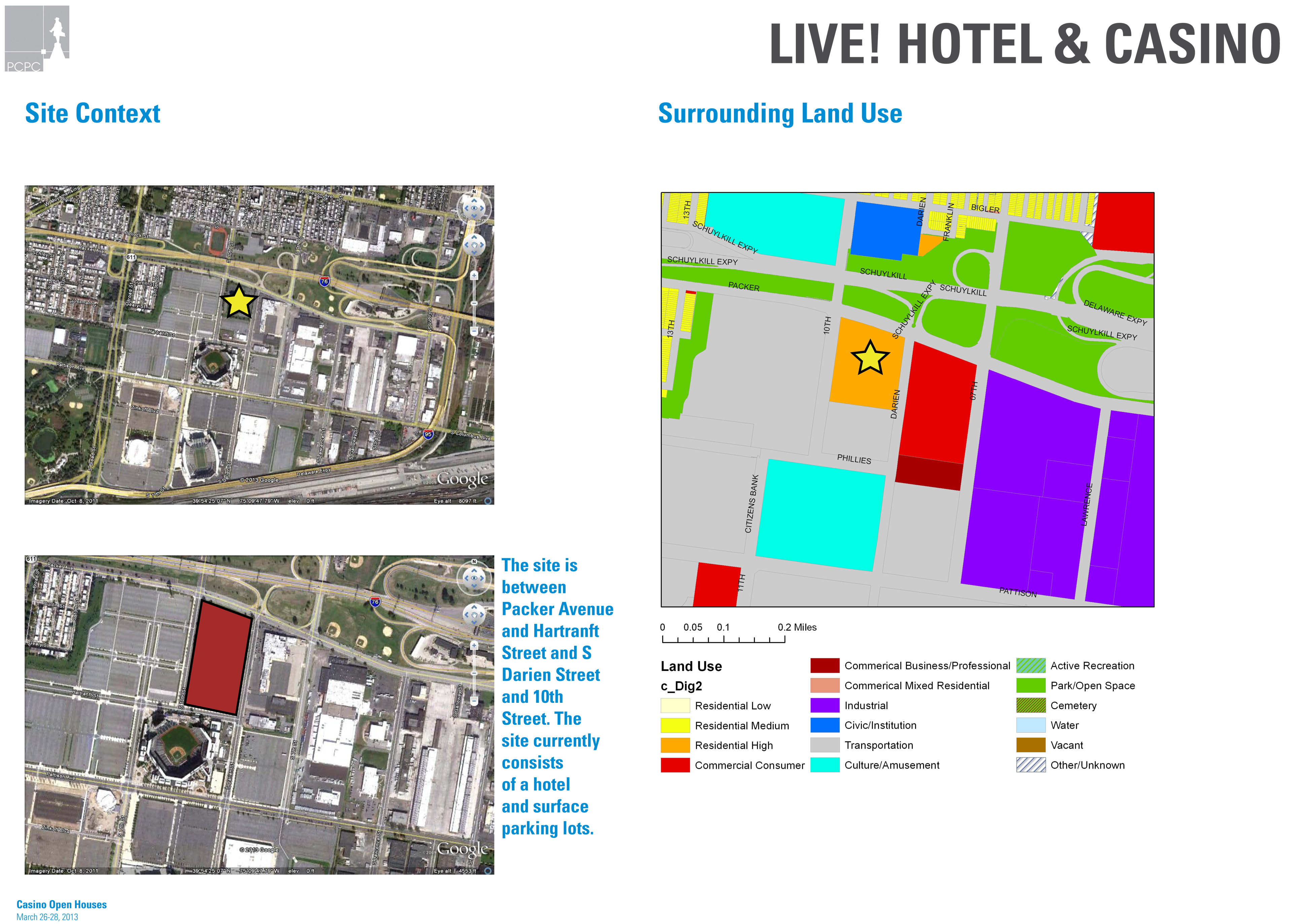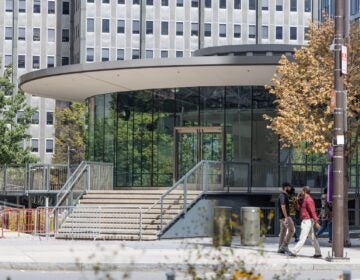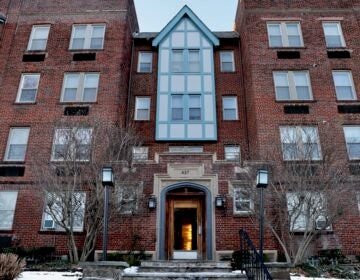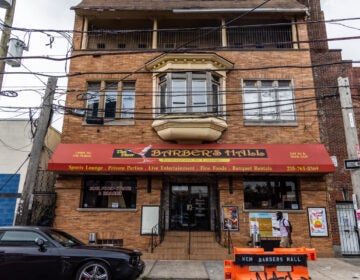Proposed casinos to get report card from Design Advocacy Group
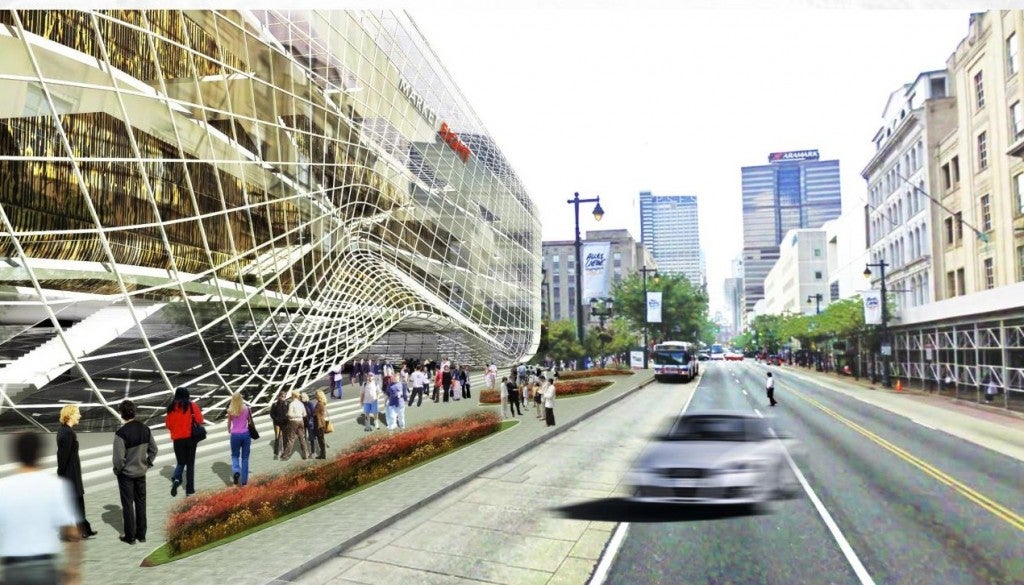
The six Philadelphia casino proposals are about to get a report card from an organization of Philadelphia architects, urban planners and other design professionals.
According to an analysis by the Philadelphia Design Advocacy Group‘s Casino Committee, Market East Associates Market8 leads the class with an A for its Market and 8th streets location and an A- for design. Tower Entertainment’s The Provence, at Callowhill and Broad streets, got the second-highest marks: B+ for location and a C for design.
The DAG Casino Committee will present its analysis and report card to the rest of DAG Thursday during an 8 a.m. meeting at the Center for Architecture, 1218 Arch Street. A final draft of the document will be presented to the Pennsylvania Gaming Control Board at its public hearings on the proposal next week.
PlanPhilly got a report card preview and insight into the committee’s reasoning during an interview with committee members Elise Vider, a journalist and editorial consultant; David B. Brownlee, an architectural historian and historic preservationist; and two other DAG leaders who helped draft the report, architects Kiki Bolender and George L. Claflen, Jr.
“We tried to identify the potential of every site and what could be achieved on each of the sites,” Brownlee said. “Overall, some sites had more potential to do important things for the city, and some projects did a much better job of making use of that potential.”
In short, the group likes the two most urban proposals the best.
“The transit assets that Market8 has are so good, it is just really, literally sitting in a connecting point for transit,” said Vider. “We thought that was extremely important.”
From the report card document: Market 8 “would knit together the historic district, the Convention Center, and the retail and business districts of Center City, connecting the tourist city to the commercial city. And it would catalyze development on Chestnut East and Market East, which are both underutilized today.
“The design deals effectively with these opportunities with a vibrant mixture of uses. The gaming floors are lifted above the street level, which thus can accommodate an array of dining and shopping alternatives, and automobile pick-up/drop-off is diverted from busy Market Street to a new roadway that ducks under the casino to connect Eighth and Ninth streets. Parking is (very commendably) underground.”
At the first Pennsylvania Gaming Control Board hearing in February, Market8 representatives touted that connectivity. One of their competitors, Vegas casino mogul Steve Wynn, said it didn’t matter, because customers don’t take public transit to casinos.
When asked about this, Vider said this was a “chicken and egg” question. Nobody takes public transit to casinos, she said, because there aren’t any casinos built near public transit.
“We already have on the waterfront a thriving automobile-visitor oriented casino,” Brownlee said. Adding another such entity doesn’t seem wise because “you are going to take the people interested in coming by car and give them another place to go. It might divide the market in half. This would attract a different clientele.”
The group says there is much to like about the Provence’s location. It “stands in the reviving commercial and cultural corridor that stretches north toward Temple University from City Hall, the Convention Center, and the Pennsylvania Academy of the Fine Arts. The development of this site is of greater importance for the future of the city than the urbanization of the parking lot jungle around the stadiums or the even filling in a piece of the long Delaware waterfront. A short walk from the Convention Center, it includes the landmark Inquirer Building at 400 North Broad, which the project would remodel as a small hotel. These are highly important considerations,” the report card document states. But it also notes t hat the bulk of the project wouldn’t be on Broad Street at all, but on Callowhill.
Most committee issues with The Provence are related to design.
“We think the sort of stagey, pretend Frenchness of it is frankly, silly,” Brownlee said. From the report card:
“The claims that the design shows “French influence” are baffling, and seem to be related to the small mansard-roofed structures (more like American houses of the 1860s than anything Parisian) that form a rooftop village of shops and restaurants that targets those already in the casino. This is not an appropriate style for an American city of the twenty-first century …”
The other applicants didn’t do as well on DAG’s test: Wynn Philadelphia at 2001 Beach Street and 2001-2225 Richmond Street in Fishtown has a D for siting and a C- for design. Stadium Casino’s Live! Hotel and Casino at 900 Packer Ave. has a C for siting and a C- for design. Penn National Gaming’s Hollywood Casino has a C for siting and a C- for design. PHL Local Gaming’s Casino Revolution has a C- for siting and a C+ for design.
The DAG committee said the Wynn site is of key importance to the future of Philadelphia’s Central Delaware Waterfront, but believes the Wynn proposal is wrong for the site. “The massive, casino/hotel is only shown in distant daytime and nighttime perspectives. It was designed by their in-house team (Wynn Design and Development) and appears to be a very generic high-rise,” the preliminary report card states.
“The site plan shown in the media shows a massive building footprint, oriented to the road and not the river, and surrounded by acres of parking covered by a green roof … While the green roof is commendable, there is no certainty that the roof will be habitable,” it states. “A much better solution would be to extend the gracious park-like entry around the hotel and casino and extend it to the river, creating a true park setting that would actually be usable by casino guests and the public. The addition of a multi-story garage structure would open up the site even more for green space and make future expansion or ancillary development feasible.”
Claflin said that siting a second casino so close to SugarHouse would create a defacto casino district. That’s not necessarily a bad thing, he said, but that shouldn’t happen without the city having a planning-oriented discussion about what that would mean for the area, the city as a whole, and the properties that sit between SugarHouse and the Wynn site.
Bolender and Vider brought attention to one building in particular: The old PECO substation next to Penn Treaty Park. PECO still uses the site, but has indicated it won’t always. If Wynn gets the license, the city should talk to him about helping to restore that site for another use, Vider said. “That would be a silver lining.” Bolender said the PECO building was one of the city’s most valuable historic sites, and it certainly will be redeveloped, despite considerable expense, but as what? Brownlee wondered if bookending with casinos would make converting the PECO building into a third casino the only viable option – it was a question he said he did not have the answer to.
At the city’s casino listening sessions held last week, many people commented that they liked the South Philadelphia locations precisely for that reason – they are the furthest away from residential neighborhoods.
But the DAG representatives don’t embrace that reasoning.
“Are we willing to accept there is a throw-away section of the city?” Bolender asked.
Brownlee noted the city’s Lower South comprehensive plan, which includes the three South Philadelphia casino options, calls for more urban development and an entertainment corridor along Pattison Avenue, between the subway station and the stadiums. “It’s a worthy objective,” Brownlee said. But the three proposals wouldn’t help. “One is on Pattison, but on the far eastern end at Front Street. It doesn’t seem physically able to participate. The others are not on Pattison at all, but on Packer Avenue. Really, all you can say about the site advantages of these three is that they are so far away from anything else they won’t bother anything else.”
Said Brownlee: “It seems to me to be very sad if we must treat a casino as if it is a toxic waste dump and put it far away from everything because it can do no good. I believe it can do good.”
Of the Live! Hotel and Casino, the preliminary report card says: “The car-dependent complex threatens to worsen game-time traffic tie-ups at the stadiums, and its proposed garage has unattractive facades that appear to compromise important views to Center City from Citizen’s Bank Park.” The group states the design is similar to a suburban shopping mall.
Very similar comments were made about Hollywood Casino and Casino Revolution.
“The nearby Hollywood casino at Seventh and Packer is a similar suburban-style complex that risks tying up traffic for sports fans while contributing nothing to the creation of an urban entertainment district,” the report card states.
The committee doesn’t like Casino Revolution’s location, either, or its first phase of design. “The design, authored by the Hnedak Bobo Group of Memphis, promises someday to include a stylish modern high-rise hotel that would be a South Philadelphia landmark. But it begins with the rehab of a warehouse, surrounded by warehouses,” the report states. “It’s good to dream, but better to build.”
The DAG members PlanPhilly interviewed said they hope the report card will generate discussion about urban design and the casino projects.
“I think that the gaming board is not particularly interested in design, we have seen that already,” Bolender said. “But if they see a swell of opinion about (a location), it might make them think they are going to make less money there, and that will get more attention.”
The group expressed frustration at the lack of detail provided by most of the applicants, but assigned grades based on the information available. The report card may be updated if new designs merit that, they said.
WHYY is your source for fact-based, in-depth journalism and information. As a nonprofit organization, we rely on financial support from readers like you. Please give today.




